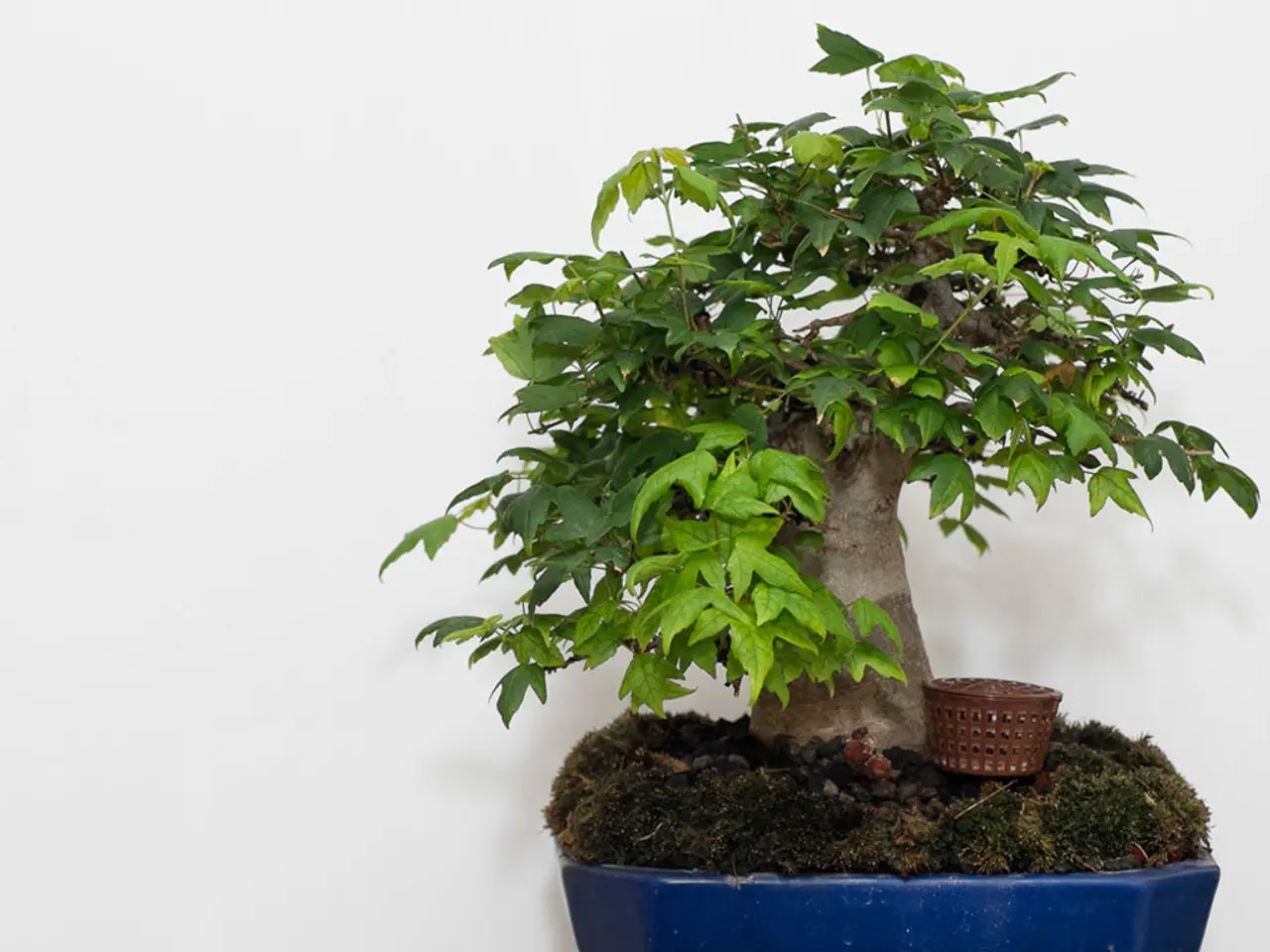Proper Maintenance for Dwarf Elm Trees in Containers
The Chinese Elm Bonsai, a popular choice among bonsai enthusiasts, is known for its beautiful appearance, versatility, and ease of care. This species, native to China, Korea, and Japan, boasts a unique branch structure with gnarled trunks and multiple branches extending vertically upwards at sharp angles.
Propagating Chinese Elm Bonsai can be achieved through two common methods: cuttings and air layering.
**Propagating by Cuttings**
In spring, select a semi-woody branch about 40 cm long. Make a clean cut just below a leaf node, remove leaves, and dip the base in rooting hormone. Plant the cutting in a pot with a well-draining medium such as vermiculite, and keep it in semi-shade while maintaining moisture until roots develop. This method is popular and effective for Chinese elms, which grow fast and root readily from cuttings.
**Propagating by Air Layering**
Choose a healthy branch and wound the bark ring around the branch to expose the cambium. Wrap the wounded section with moist sphagnum moss or an equivalent rooting medium. Cover the moss with plastic wrap or a plastic ball to keep moisture consistent. Secure it loosely and keep it moist; roots will develop over several weeks to months. When you see sufficient roots, cut below the root ball and pot the new plant. This technique is especially useful for creating bonsai with specific trunk shapes or for difficult-to-root branches.
When repotting Chinese Elm Bonsai, carefully remove the tree from its current pot, loosen any tightly bound roots, trim away dead or damaged roots, choose a new pot slightly larger than the previous one, use a well-draining bonsai tree soil mix, and place the tree in partial shade for several days to help reduce transplant shock.
Training techniques for Chinese Elm Bonsai include wiring, clipping shoots, and using weights or guy wires to bend branches into desired shapes.
Pests such as aphids, spider mites, and scale insects can pose challenges to the health of your Chinese Elm Bonsai. Aphids cause curling of new growths and leave sticky honeydew behind. Use a soap solution mixed with water or ladybugs as organic pesticides. Spider mites are a common pest on Chinese Elm Bonsai, causing leaves to yellow and fall off. Prevent infestation by regularly misting the tree and keeping humidity levels high. Scale insects attach to branches and leaves, sucking out nutrients. Use a horticultural oil spray to control their population.
Chinese Elm Bonsai are semi-deciduous and will lose their leaves in the colder months, but will grow new leaves in the spring. In Fall, the leaves of a Chinese Elm Bonsai turn vibrant shades of orange or yellow before falling off.
Caring for a Chinese Elm Bonsai requires regular watering, fertilizing, pest control, pruning, and more. Keep the tree in a well-draining potting mix and water it consistently, but avoid overwatering. Fertilise regularly to ensure the tree has enough nutrients. Indoor keeping requires more attention, as the environment must be carefully controlled to mimic the ideal conditions for the Chinese Elm Bonsai.
Chinese Elm Bonsai are highly adaptable and can thrive in a variety of environments, making them ideal for beginners. However, they do have specific needs that must be met to ensure their health and longevity. With patience and care, you can enjoy the beauty and versatility of a Chinese Elm Bonsai in your home or garden.
**Summary table:**
| Method | Timeframe | Complexity | Best Use | |--------------|----------------------|----------------|--------------------------------| | Cuttings | Several weeks (spring)| Easy | Propagating young branches | | Air Layering | Several weeks to months| Moderate | Propagating from mature branches, creating thick trunks |
- The Chinese Elm Bonsai, popular among enthusiasts, is a tree species native to China, Korea, and Japan, known for its unique structure and ease of care.
- Propagating Chinese Elm Bonsai can be achieved through cuttings or air layering, each with their distinctive methods and timelines.
- In spring, propagating by cuttings involves selecting a semi-woody branch, making a clean cut, dipping it in rooting hormone, and planting it in a well-draining medium.
- Air layering, another technique, is useful for specific trunk shapes or difficult-to-root branches, involving wounding the bark, wrapping it with a rooting medium, and securing it while maintaining moisture until roots develop.
- When repotting Chinese Elm Bonsai, carefully remove it, loosen bound roots, trim dead ones, choose a larger pot, use a well-draining soil mix, and allow it to acclimate to the new environment in partial shade.
- Training techniques like wiring, clipping shoots, and using weights or guy wires help shape the bonsai into desired forms.
- Pests such as aphids, spider mites, and scale insects can threaten the health of the bonsai, but organic solutions like soap solutions and ladybugs, or horticultural oil sprays can be used for pest control.
- Despite their adaptability, Chinese Elm Bonsai require regular care and a carefully controlled environment to thrive, making them ideal for those seeking personal growth through nurturing relationships with plants, pets, or even careers in home-and-garden, shopping, education-and-self-development, or career-development.





